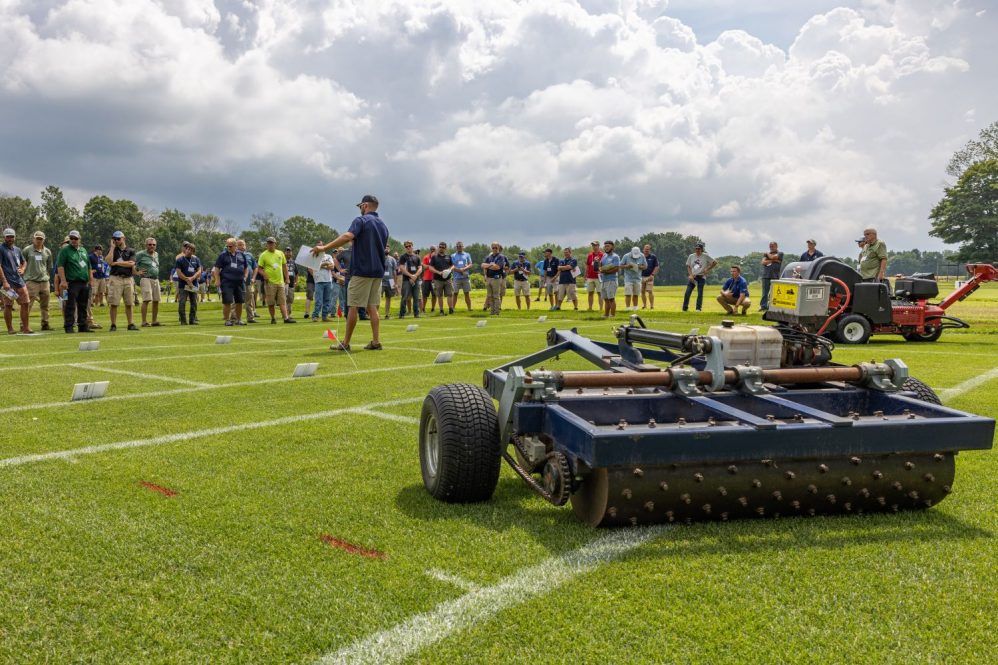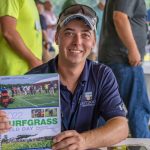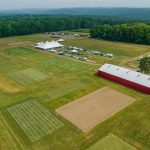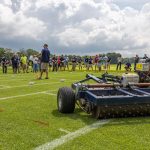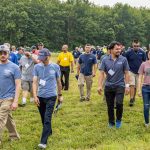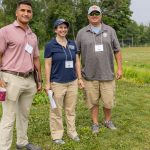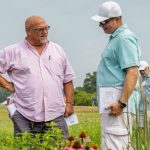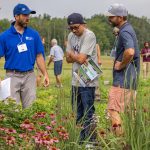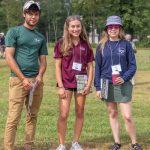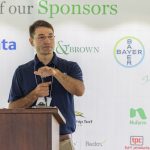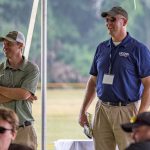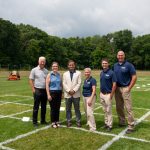At the UConn Turfgrass Science Program’s biennial Turfgrass Field Day – the first to be held in person since the start of the COVID-19 pandemic – UConn researchers shared their latest projects with industry professionals who can directly benefit from this work.
There was record-breaking attendance at this year’s event, with 260 attendees that represented all aspects of the turfgrass industry, including golf course managers, landscapers, athletic field managers, and municipal grounds managers. The event has been held at UConn every other year since 2010. It returned to an in-person format for the first time this year after going virtual in 2020 due to the pandemic.
“We are thrilled to welcome back the turfgrass community to campus this year,” says Indrajeet Chaubey, dean of UConn’s College of Agriculture, Health and Natural Resources. “As part of our land grant mission, UConn is committed to connecting the turfgrass industry with the resources, skilled workforce, and innovative research they need to grow and succeed in the state.”
The research conducted by UConn’s turfgrass faculty is designed to address real-world problems turfgrass professionals face daily, as well as find solutions to make turfgrass more sustainable by reducing the amount of water, fertilizer, and pesticides managers need to use.
“It’s a really exciting extension and outreach activity where we get to directly share our research with stakeholders. They leave the day with practical information that helps them in their jobs,” says John Inguagiato, associate professor of turfgrass science. Inguagiato works closely with members of the turfgrass industry throughout the year and helps prepare students for specialized jobs after graduation.
During the Turfgrass Field Day, visitors toured the research plots at UConn and attended 10 guided research talks from turfgrass researchers about their current projects.
Inguagiato’s research focuses on turfgrass pathogens and disease management. He presented research on how cultural management practices, such as topdressing that modify the turfgrass canopy through the addition of soil, could reduce the incidence of dollar spot, the most common disease for golf course fairways.
Jason Henderson, associate professor of turfgrass science, presented on a project he is leading about the use of robotic mowers to reduce the incidence of diseases of grasses. Because robotic mowers can work overnight, they both reduce dew and leaf wetness as well as disrupt fungal growth that occurs during moist overnight hours.
Victoria Wallace, extension educator of sustainable turf and landscape science, and Inguagiato shared their findings of turfgrass performance in trials as part of the National Turfgrass Evaluation Program, which is a multi-state evaluation of new turfgrass cultivars that serves to identify cultivars best suited for sustainable management in Connecticut.
In addition to these talks, there were numerous self-guided research stations and approximately 40 exhibitor booths featuring local turfgrass businesses at the event.
Beyond discussions of the latest innovations, Turfgrass Field Day provides a networking event that supports lasting connections between researchers and those working in all corners of the industry.
“For us it’s really a fun day. A show-and-tell with the turfgrass industry of all the research we’re working on at our facility. The day is designed to allow for interactions between turfgrass faculty and stakeholders, they leave with information they can use, and we hear more about the challenges and issues important to them,” Inguagiato says.
Follow UConn CAHNR on social media
